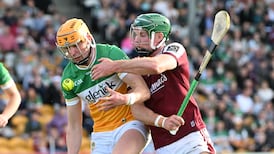Caddie's Role: You have definitely heard of the Ryder Cup. You might recollect the Presidents Cup. Jog the memory and you may recall the Seve Trophy, but the Tavistock Cup is probably too far down the memory bank to haul up at this time of year.
Well here's another "cup" to throw into the professional team golf trophy cabinet, the Goodwill Trophy.
We packed up our bags quickly in Shanghai and sped out of the brave new world of golf in modern China on the Sunday of the HSBC event. The Sheshan complex is modelled on Italian architecture, where stone villas surrounding the course have a higher price tag on them than they would have in northern Italy. Virtually all of the houses, some valued at up to €5 million, lay vacant.
An hour and a half of flying later and we landed in Shenzhen, which is effectively the cradle of golf in China. In years to come they will refer to the area as the St Andrews of China.
Architecturally, it would not challenge the picturesque old grey town, but in terms of its contribution to the birth of golf in China it is definitely the leader. Mission Hills in Shenzhen dates all the way back to 1994.
We were beckoned to Mission Hills and the World Cup course, which is made up of 18 of the 216 holes that meander through the vast complex just over the border from Hong Kong. We were there for the inaugural Goodwill Trophy, a two-day event made up of two eight-man teams forming the International and Ryder Cup sides. My player, Retief Goosen, captained the International team to a one-point victory over Colin Montgomerie's Ryder Cup team.
The trophy is the brainchild of two billionaire nouveau golf enthusiasts - Terry Mathews, chairman of Celtic Manor in Wales and Dr David Chu, the chairman of Mission Hills.
The idea behind it, apart from promoting both the world record breaking Mission Hills as the largest golf club in the world and Celtic Manor, venue for the 2010 Ryder Cup, is to enhance trade, tourism and cultural exchange between Europe and China.
The two dragons from different continents joined together.
With a pro-am and two sets of matches a lot of golf was crammed into Monday and Tuesday of last week.
The business aspect of the event was also catered for with speeches on international business cooperation, corporate investment and capital management. The gala dinner was attended by economists of world renown, high-ranking politicians, a host of other dignitaries, the players and, of course, their esteemed caddies.
The entertainment included Shenzhen's version of an all-girl band playing very local music on very Chinese looking instruments. They were followed by a Beijing troupe of Chinese Opera actors.
The event was set up as if it were a full tournament, with TV stands on every hole, spectator ropes and huge advertising boards all around the Shenzhen and Hong Kong area. With 12 courses in the complex there is a big demand for caddies. There are 2,500 bag-ladies attached to the club. I suspect the vast majority of the spectators came straight from the caddie shack under strict instruction to make the place look busy. A good live atmosphere was "created".
No sooner had the trophy been hoisted by Retief and we were off over the border to Hong Kong to play the 48th Open at the oldest golf club in the region. What was known as the Royal Hong Kong Golf Club until the colony was handed back to mainland China in 1997, was founded in 1889.
The present site, Fanling Golf Club in the New Territories, was literally founded by pioneers who took their yachts up the Shenzhen (Shum Chun) river in search of a suitable location for a golf course.
A two-man rickshaw carried members into the hills above Kowloon. They then went on foot to Shatin where a police launch took them to Taipo. The remainder of the trip to Fanling was by pony, sedan chair or rickshaw. As the course was built on villagers' land, there was a constant problem for the golfers negotiating the "pimples" or grave mounds and jars of human bones. In fact today there are graves dotted all around the course.
In the early days there was far greater danger from wildlife than burial grounds. A tigress was spotted on the eight green of the old course in 1915. After an errant tee shot by my boss last week we discovered the undergrowth is not to be tangled with. I was still pulling pieces of jungle off me on the back nine having gone astray on the fourth hole.
The pioneers in mainland China have had an infinitely easier task in developing their golf factory just up the road with an endless supply of earth-moving equipment and easy access. The Hong Kong Club's impressive 54 holes at Fanling in a confined space is pretty insignificant compared to the 216 holes at Mission Hills.
With the price of a membership fee weighing in at around $100,000 it sounds like a bargain compared to the established and crusty Hong Kong Golf Club. There is a waiting list of 20 years and the joining fee is $1.6 million. Mission Hills may well hold the course-size record but Hong Kong has the edge on the old money.












